The 225-Kilometer Walk Along The Israel Coast
Text and photos by Frank Mecklenberg
When I was a young 68 years old, my wife and I dreamed of walking the Israel National Trail. We wisely decided to try out a section of the trail before seriously preparing for walking the entire trail. In 2005 we loaded some borrowed camping equipment into our rented car and drove from Jerusalem to Timna Park, north of Eilat for some camping and hiking.
While there, we decided to climb Mount Timna, which is part of the Israel National Trail. The beginning of the trail was not too difficult. We met a hiker descending from the summit who encouraged us to continue because he did not find it too difficult. Well, maybe it was not too difficult for him, but the steeper it became, the more we wondered about continuing. Toward the summit, when the slope was very steep, I suggested that we turn back, but my wife said, "There is no way that I can turn back", because it was too difficult to descend. So, we went on with myself in the lead so that I could help her up one section at a time.
In order to reach the summit on the face of the steep cliff, it was necessary to use metal handholds that had been secured to the rock. Once we were on top we were convinced that the Israel National Trail was not for us. After eating our lunch on top of Mount Timna, we managed to get down and enjoy the rest of our camping.
Four years later, while living in Ashkelon for a few months, we considered an alternative to the Israel National Trail. The alternative was to walk the entire length of the Mediterranean coastline of Israel, starting in the north at Rosh Hanikra near the border with Lebanon, and finishing at Hof Zikim Beach, just south of Ashkelon, before walking south toward the border with Gaza for as far as we were allowed (the entire trip took 15 days).
At our age we were not up to carrying a heavy backpack and camping out on the beach each night, nor did we wish to pay for staying in hotels or guest houses, although we did use a guest house one time. We used the train from our rented apartment in Ashkelon to the train station close to where we wanted to begin walking that day, and then caught the train at the station near where we ended the day's walk so as to return to Ashkelon.
Overall, we had excellent weather for our walk along the coastline for fifteen non-consecutive days from mid-March through mid-May. We walked an average of 15 kilometers, or a little over 9 miles, per day of the 225-kilometer (140 mile) walk. The coastline included sandy beaches, shell beaches, flat stones, ancient Roman roads, cliffs, and both soft and firm sand. Some sections were heavily dotted with hotels, restaurants, and lifeguard towers, while other sections were fairly empty; we were alone, or occasionally saw another person. We enjoyed meeting people, and discovering some of the most beautiful parks, reservoirs, and museums in Israel.
Some stretches required much more effort to walk because of the type of sand, and there were places where we needed to wade through those rivers that empty into the sea.
Some of the outstanding areas we saw during our walk included the coastal area of the Dor HaBonim Beach Reserve. The combination of rock formations and the way the surf hits the rocks makes it a must for others to visit.
The coastal walk between Palmachim and Ashdod was one of quietest stretches with very beautiful stones and shells covering the beach. The beach was firm, which made it much easier to walk. The reason this stretch was so quiet is because there is no public entrance until you get close to Palmahim or Ashdod. But there was some noise of helicopters and jets from the Air Force base.
The most interesting rock formations that we encountered were near Palmachim. I still wonder how they were shaped. Was it by water? The variations of stone, shells, and sand helped make each day's walk unique and interesting. We were told that it took years of water power to embed the sea shells on rocks. The Palmachim Museum is little known, but well worth visiting.
We were intrigued by some unusual things we saw, like the elevator in Netanya that takes people from the street level down to the seashore. This is really wonderful for people who are handicapped and have trouble walking. The tents and structures we saw indicated that some people live or vacation right on the shore of the Mediterranean Sea.
Near Herzliya, we were surprised to see the remains of an ancient building on the sand. We learned that they are part of the Apollonia National Park, located above the shore. Apollonia exhibits history from the Phoenician period to the Persian period, and of the Greek and Roman period. After our walk we visited the Apollonia National Park and found it very interesting. We would never had known about it if we had not walked the coast.



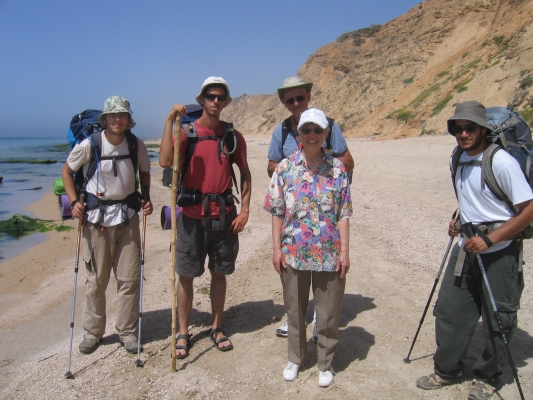
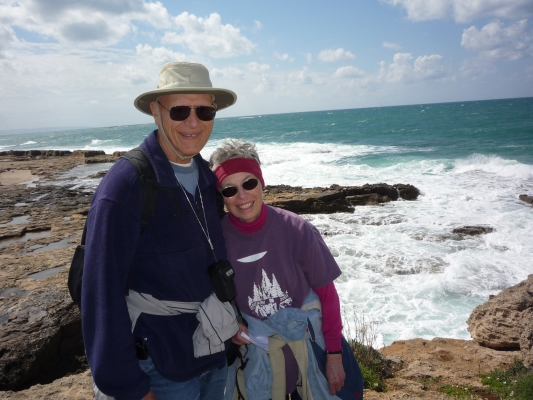
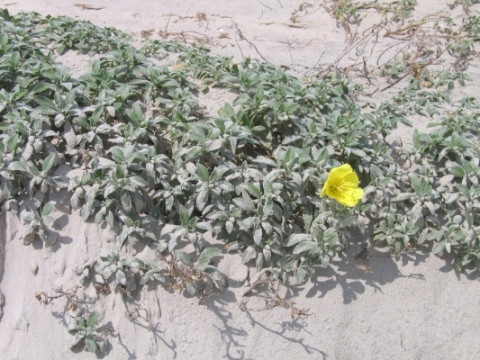
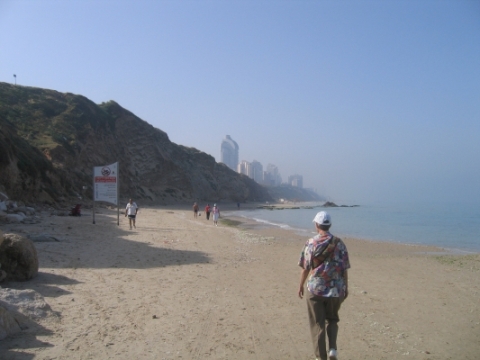
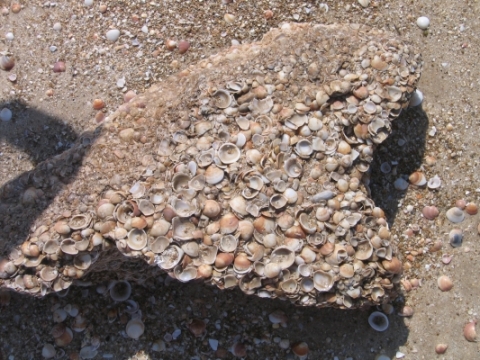
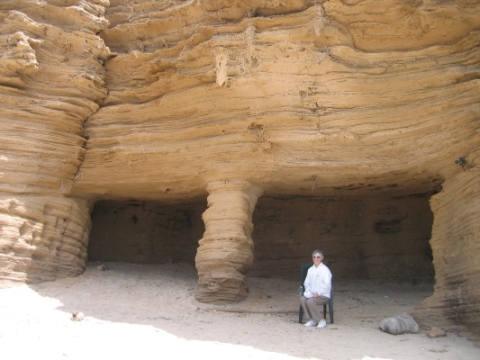




Comments 1
What an experience!!! Thank you for sharing your journey. I look forward to exploring Israel.